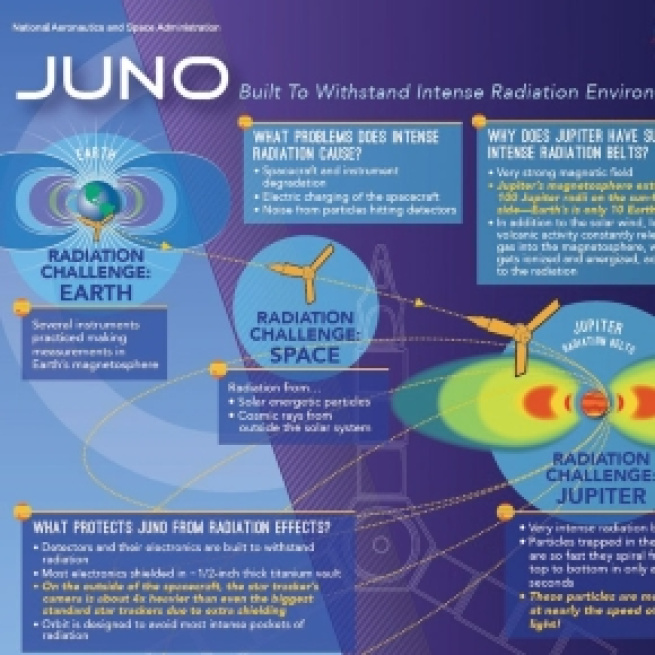Juno has been travelling in the direction of Jupiter for over approximately 4 years and 10 months to study its atmosphere, magnetic and gravity fields and auroras. Throughout all this trip, Juno has been exposed to different types of radiation. To protect it and its payload, scientists designed protective equipment which will make the spacecraft endure the harshest radiation settings.
Interplanetary medium
This is the material with which the solar system is filled. It includes cosmic rays, dust, and hot plasma from the solar wind. Its density varies in distance from the sun, with around 5 particles per cubic cm in the vicinity of the earth; however, the interaction with magnetic fields and coronal mass ejections may increase it to around 100 particles/cm3.
Spacecraft in space is exposed to the radiation encountered in this medium.
Radiation in space
In space, radiation originates from three main sources; in planets, the Van Allen Belts; from the sun, solar proton event and from the deep space, cosmic rays. Expose to radiation can damage electronic instruments and solar cells. One single ionizing particle can cause effects on a spacecraft, including noise, damage to instruments and vehicle deterioration. During intense coronal mass ejections, particles can be accelerated to great energies, producing damage to electronic circuits and astronauts in space.
Jupiter’s radiation
The magnetosphere on the side facing the sun of Jupiter extends about 50 times its diameter; for comparison earth´s magnetic field extends only 5 times its diameter.
The most intense radiation on Jupiter is originated in the equatorial belts. The particles here are energized to almost reaching the speed of light, spiraling from top to bottom in only a few seconds. the interaction of solar storms at the boundary of the magnetosphere creates Jupiter´s auroras.
What protects Juno from radiation?
Most of Juno´s electronics are encased into a titanium vault, capable of reducing the exposure to radiation by about 800 times. The electrical wiring and sensors are protected by special material, allowing them to withstand the attacks of energetic particles. The spacecraft´s star tracker is protected with extra shielding, making it heavier than even the largest previous star tracker designs on other vehicles.
Juno will be placed to fly around Jupiter in a polar orbit, which was specially designed to avoid the amounts of radiation that are produced on its travel around the gas giant, especially at the equator, where the highest radiation is produced.
The mission is intended to study Jupiter´s atmosphere to gather information about its composition. it will also investigate the gravity and magnetic fields of the planet and the auroras.This will expand scientist’s knowledge of astronomy and astrophysics.

